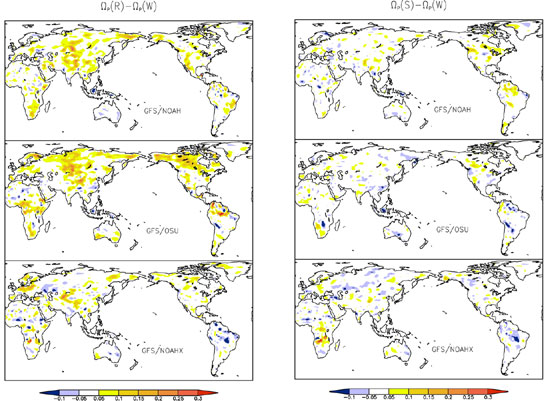Response of Precipitation to Soil Moisture Constraints
in the NCEP Global Model Simulations
Earlier pilot study showed a wide disparity among general circulation models (GCMs) in the land-atmosphere coupling strength (LACS), the degree to which the atmosphere, especially precipitation, responds to anomalies in land surface state, in the boreal summer season. A recent presentation by Kenneth Mitchell of NCEP/Environmental Modeling Center showed the LACS in the NCEP Global Forecast System (GFS) in the context of multi-model GLACE* approach. Results demonstrated
a broad disparity in the warm season precipitation response to the constrained land states across GCMs (Figure). The NCEP GFS had weak warm season precipitation response to constrained land states, especially when only deep soil moisture was prescribed (see the figure below). It seemed to emerge mostly from weak transpiration response to constrained deep soil moisture, indicating that other canopy stress factors (humidity, temperature, insolation) would not be negligible. The differences among three GFS land surface model modes were small compared to the inter-atmospheric GCM differences.* GLACE: Global Land-Atmosphere Coupling Experiment, an inter-comparison study across a range of more than ten atmospheric general circulation models.
|
|
|
(Contact Kenneth Mitchell)
